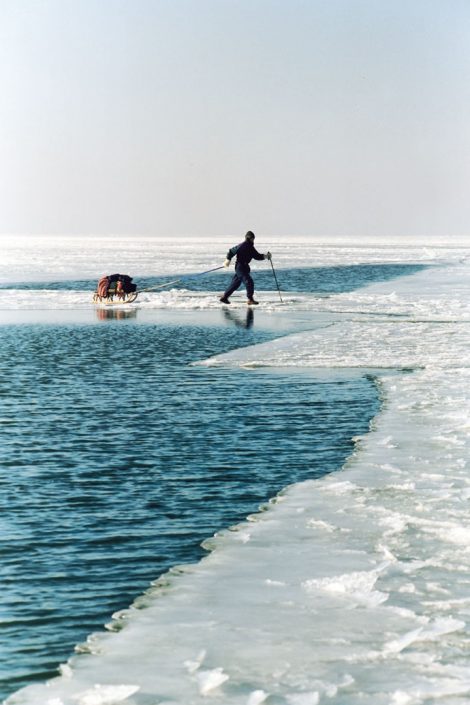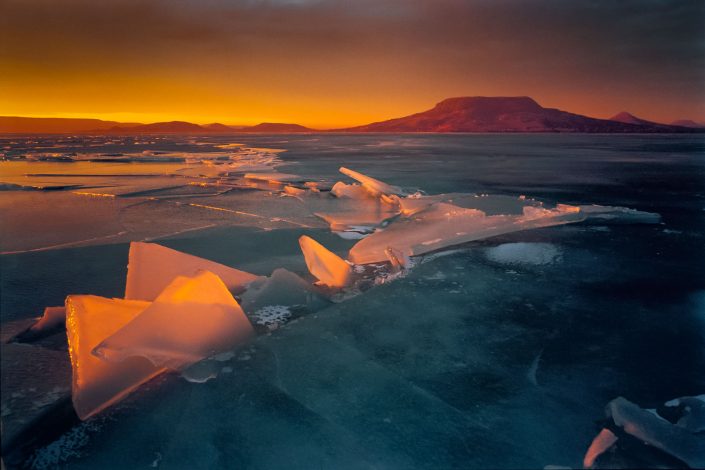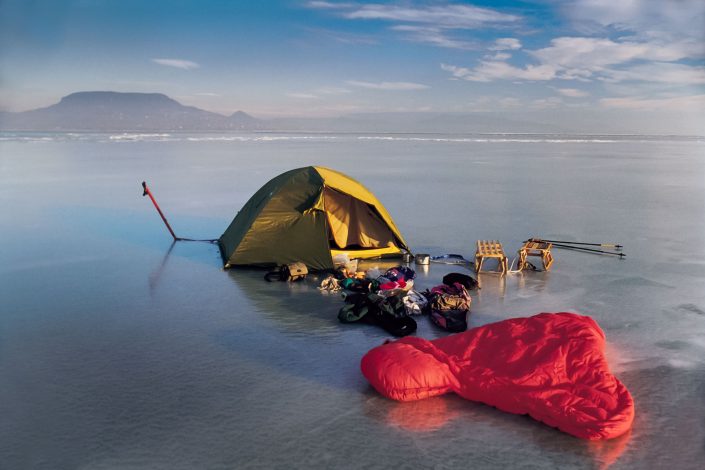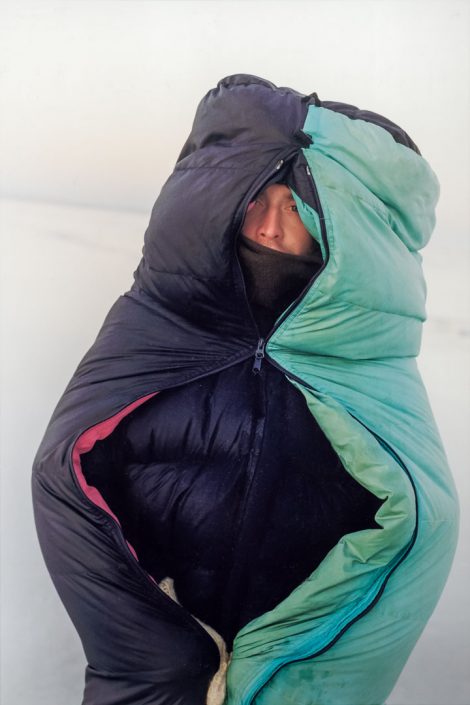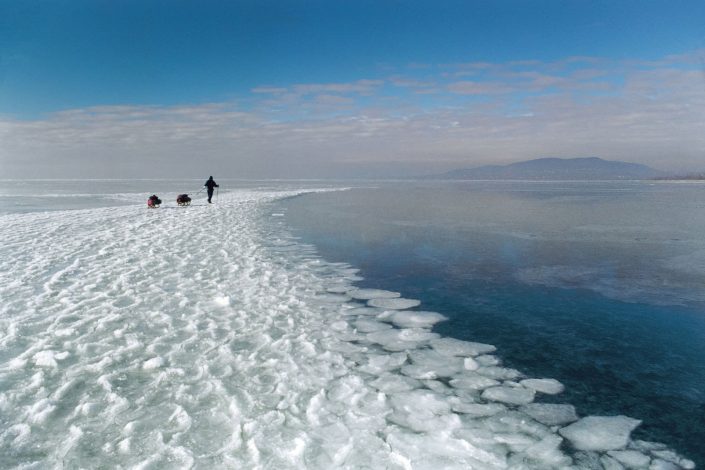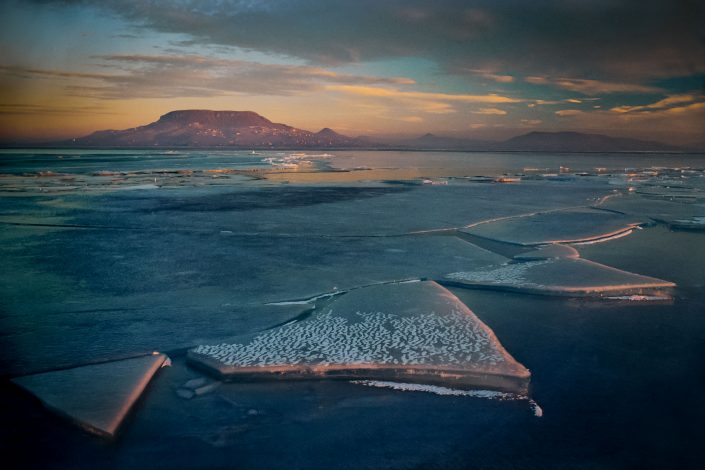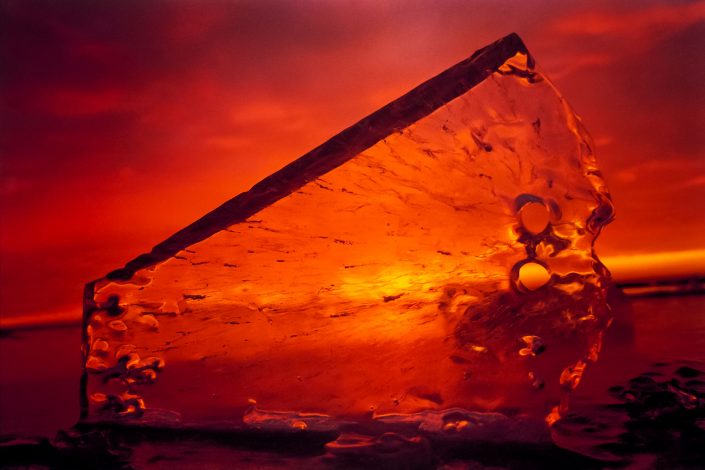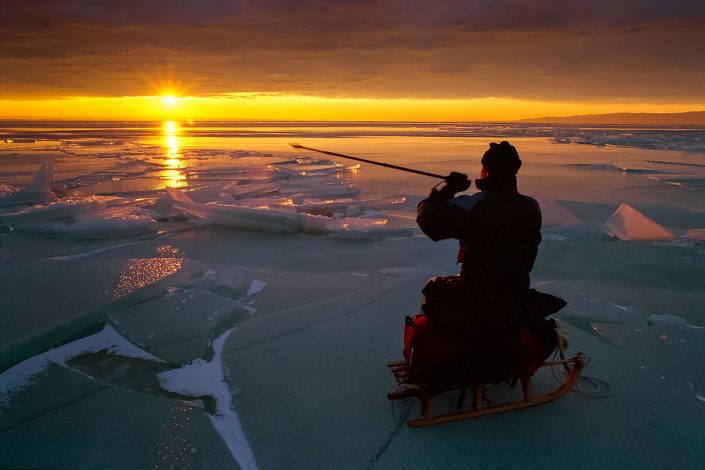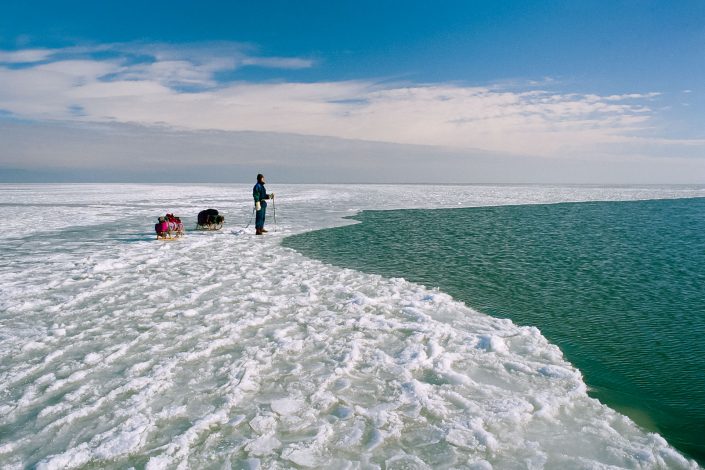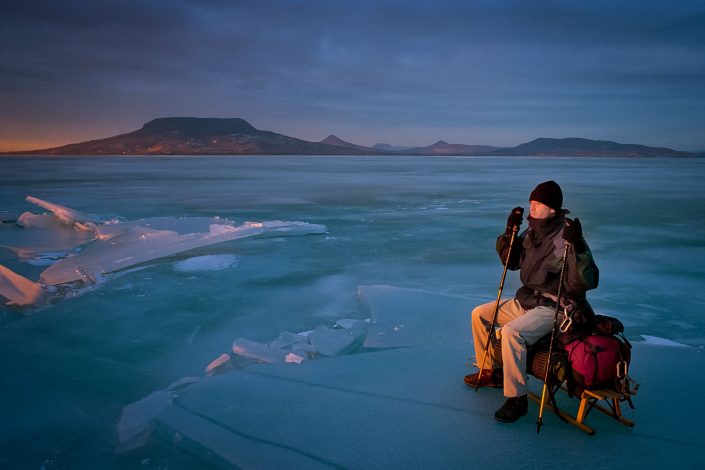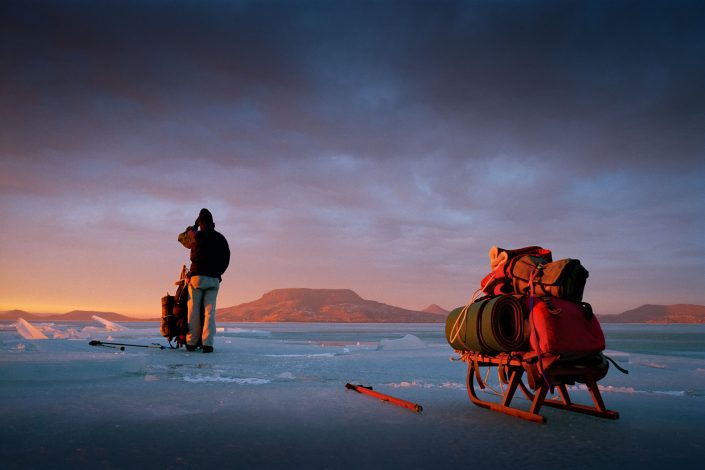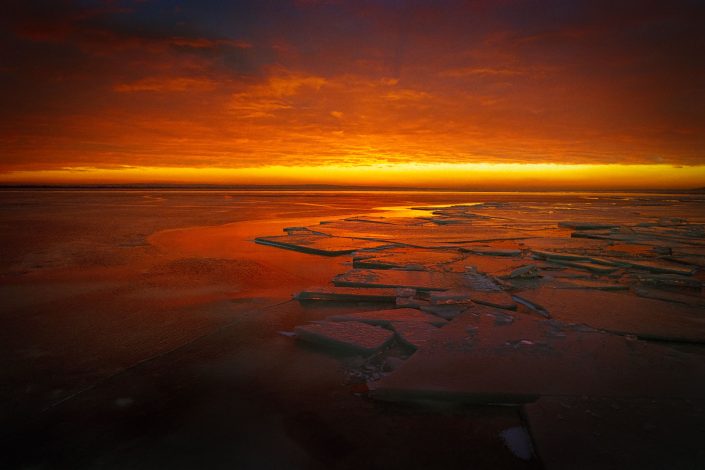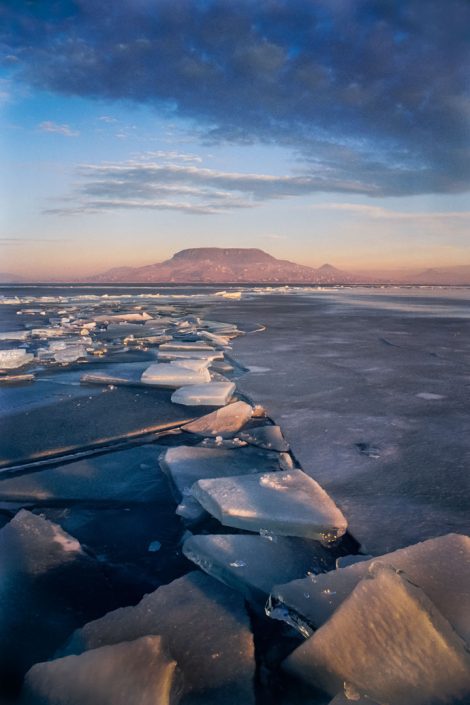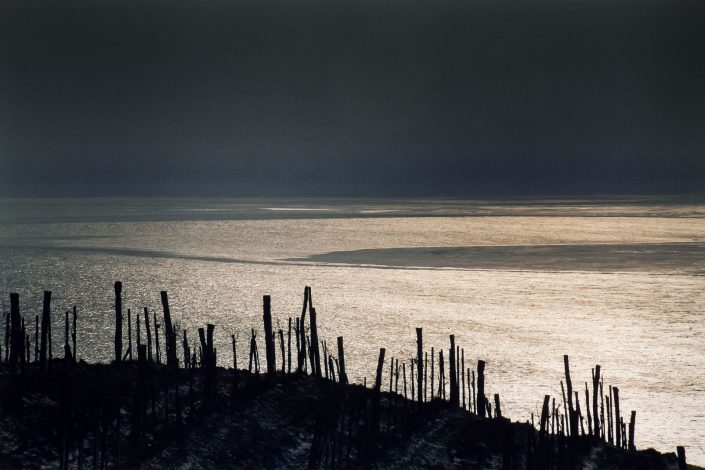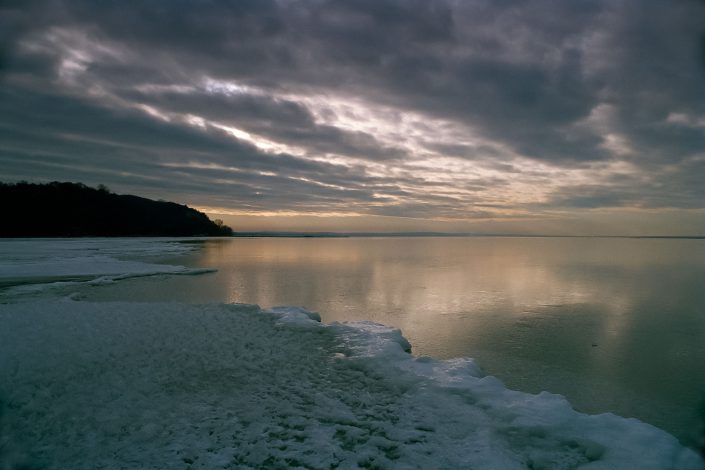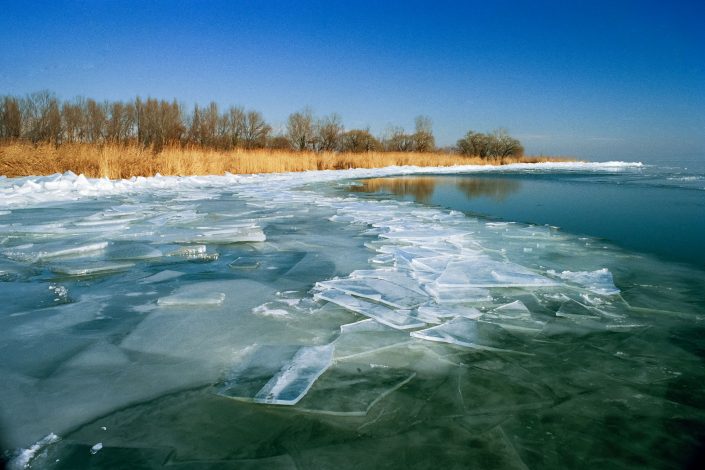If the ice cracks under the wanderer, it is almost impossible for him to climb out. He may grab the edge of the huge, white chasm, but it will break off in his hand. Companions may try to help, but the chances of escape are slim; they need long poles and considerable experience, and the helper must be quick as well as careful, because the human body will soon freeze to death. Even if the ice does not give way – they say that in a long, hard winter the ice can freeze to a depth of one metre – drifting islands of ice may be born. If the wanderer finds himself on an ice floe like this, his journey is over: the ice floe floats the length of the lake on the north-south currents, and that is nearly eighty kilometres. Such a journey can only result in death.
At such times, the lake does not look like a paradise of flesh-flaunting tourism.
The boys were lying in the tense darkness, with cramped muscles, when the vast ice field howled with the scream of a hurricane; the air crackled with the sound of bombs, as if a volcano were erupting beneath them. An ice volcano with lava of frost.
They left the knife, just tore the zip open, jumped out from the invisible red flames, and then – believe it or not, they could hardly hear anything outside: as if everything was snuffling peacefully, with only the ice moaning from time to time and its crystals crackling. The boys were the loudspeakers of the terrible crevasse as the sensitive sensors of their nerves swept over the grim lake and the rending of the ice that swept deep beneath them rose to 5,000 decibels.
There’s a tiny North Pole in the middle of Hungary. It melts every year, plays at summer by the Mediterranean with its sweet heat, as if it had forgotten its wintery dream with the creaking snowfield. You half-naked girls giggling up towards the blue sky, just cast a thought towards the two insane kids who climbed the flat-rolled glacier with a tiny sledge.
There’s nothing to say about the photos: they fill the space, like a concert of Bach. Badacsony’s basalt-fugues are rumbling out a deep solo, and the myriad varieties of white that run endlessly through the pictures – the crocheted ice, the ice-sparks, and the yawning bubbles – are fading away. We’ve fitted the biggest lake in Middle-Europe into the palm-shaped, saucer-shaped photographs. See, it’s a matter of depth: the whole of Balaton can be poured into the scene’s wineglass. It makes us drunk and then sobers us up.
Pál Bodor (Diurnus)

